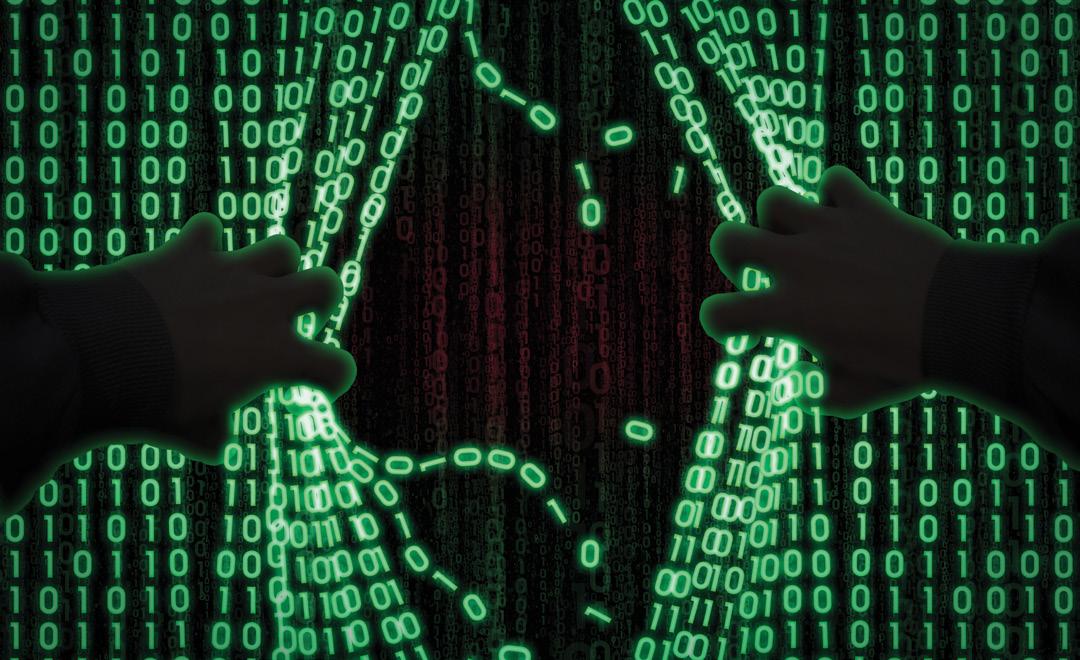
16 minute read
Cyber Security
Does a Smart Home Need Cyber Insurance?
By Jay Basen
Photo: iStockphoto.com/ValeryBrozhinsky
Cyber insurance is a necessity for businesses, but what about homes?
TechTarget defines a data breach as “a confirmed incident in which sensitive, confidential, or otherwise protected data has been accessed and/or disclosed in an unauthorized fashion. Data breaches may involve personal health information, personally identifiable information, trade secrets, or intellectual property.”
The number of data breaches in businesses has grown from 157 in 2005 to 1,473 in 2019, according to Statista. While the cyber risks to homeowners have some similarities to those of businesses, there are additional risks that are unique to them. For instance:
• Cyber Breach. The loss of personal information. According to new research from Parks Associates, 5% of U.S. broadband households annually experience identity theft, which equates to 5.5 million households affected and at least 6.6 million people.
• Cyber Extortion. The threat to publicly release personal information • Cyberbullying. Online harassment could occur in a business, school, or personal situation
• Cyber Disruption. Cyberattacks that keep you from accessing your home or possibly from running a small business that you operate from your home
• Cyber Financial Loss. The loss of funds in personal accounts due to a cyberattack
• Ransomware. The restriction to a person’s personal data typically through the encryption of their data on computers within their home
The first question is whether a smart home places a homeowner more at risk for any of the above cyberattacks. According to Symantec’s 2019 Internet Security Report, during 2018 there were 57,553 attacks against IoT devices, and 75% of those attacks were against routers. The fact that routers faced the majority of attacks makes complete sense because they are the most accessible device to a hacker as they directly connect to the internet and, according to an article in ZDNet, routers are riddled with vulnerabilities that make them an easy target. However, when you think about the number of homes with broadband internet access around the world, the chances of a hacker breaking into a smart home through the router is pretty small.
Unfortunately, attacking a router isn’t the only way that a hacker gains access to a home network. Some of the other ways that a hacker will gain access to a home are:
1. Emails with attachments that contain malware or viruses
2. Fake software that includes malware. This is especially popular with mobile devices where people routinely download “free” software from online stores.
3. Hacked online ads that lead a person to a malicious web site that either installs malware on their device or attempts to trick people into entering personal information
4. Phishing Emails – A phishing email looks like a legitimate email, but it contains links to web sites that will install malware on a computer or attempt to trick you into entering personal information, including passwords.
While a person’s risk of being hacked through their smart home is small, everyone does face real risks given the other ways that hackers have found to attack people. In fact, according to an investigation by Atlas VPN, “Hackers carry out 87 million credential stuffing attacks on U.S. citizens daily.” These are cyberattacks where a hacker will use credentials stolen during a data breach to log into an individual or company account to gain the necessary information to carry out identity theft.
Because of this, insurance companies have begun offering different forms of personal cyber insurance. Below is a summary of cyber insurance policies from major insurance companies.
Allstate
Allstate was founded as part of the Sears, Roebuck and Co. in 1931, and it became an independent company in 1993. Allstate provides both individual and family plans for identity protection. They have two tiers of service, essentials, and premier. Both plans offer:
Monitoring of online accounts and notification of any data breaches related to these accounts • Full management of identity remediation cases • Social Security number monitoring • Financial monitoring • Reimbursement of up to $1,000,000 in expenses related to fraud • Reimbursement of up to $50,000 in funds taken from bank accounts, health savings account, or 401(k) plan
In addition, the premier plan includes: • Enhanced financial monitoring of bank accounts and credit cards • Reimbursement of up to $500,000 in funds taken from bank accounts, health savings account, or 401(k) plan • Monitoring of social media accounts for someone taking over your accounts • Priority support • Credit card transaction monitoring
Prices start at $9.99 per month for an individual, essentials plan and go up to $34.99 per month for a family, premier plan.
Amica
Amica was founded in 1907 and offers personal insurance including auto, homeowners, liability, and marine coverage. As part of their home insurance policies, homeowners can purchase additional coverage for identity theft. This coverage includes: • Up to $15,000 to assist in resolving identity theft problems • Unlimited telephone support to help resolve the issue • Assistance with reporting of the issue and documentation including affidavits • Assistance reporting the issue to credit bureaus, creditors, government agencies, etc.

Photo: iStockphoto.com/blackdovfx

• Assistance filing a police report • One year of credit/fraud monitoring if a wallet or handbag is stolen
According to T. Bryan Cook, senior assistant vice president in Amica’s Sales and Client Services group, “ID theft protection can be more affordable than consumers may assume. As is the case with all coverages and policy options, we encourage customers to reach out to us directly to review pricing and coverage options available in their state for ID theft protection and resolution. We also offer a creditmonitoring service as an option through our Automobile Policy Program. This option, if chosen, gives consumers the tools to track unusual activity associated with credit reporting. We recommend a combination of both types of coverage – one to monitor activity and identify potential issues quickly, and another to provide some coverage to rectify the situation should you fall victim to identity theft.”
Chubb
Chubb was founded in 1882. They are a global insurance provider operating in 54 countries. They offer cyber protection as optional additional coverage to their Masterpiece homeowner’s policies with protection against: • Cyber extortion and ransomware • Cyber financial loss • Cyberbullying • Cyber disruption • Cyber breach of privacy
Chubb provides: • Access to specialists to assist in resolving identity theft • Public records monitoring • Discounted access to a security partner that can assist with securing your networks • Coverage to repair, or replace computer equipment, and lost data • Coverage for allegations of unintentional online libel, slander, and invasion of privacy • Cyber extortion coverage up to $25,000 • Cyber financial loss coverage up to $250,000 • Cyber personal protection up to $250,000
I was unable to obtain the cost of this insurance from Chubb.
Farmers
Farmers Insurance was founded in 1928 and is now a subsidiary of Zurich Insurance Group. Farmers Identity Shield provides the following coverage in the case of identity theft: • $28,5000 in expenses • $1,500 indemnity • Monitoring of credit and public records •Annual report of credit and public records • Phone support to answer questions about identity safety concerns • Assistance in replacing identification documents that may have been lost or stolen • Email tips and news to help prevent identity theft
In the event of identity theft, the following services are available: • Resolution services for the entire household • 24/7 phone support to assist with the identity recovery process • Preparation of documentation to notify credit bureaus, banks, etc. of the event • Creation and maintenance of a case file documenting all steps taken • Assistance in placing fraud alerts and security freezes with the credit bureaus
The price for Farmers Identity Shield coverage is, at most, $65 per year.
Geico
Geico was founded in 1936 and is the secondlargest insurer of automobiles in the U.S. It offers other types of insurance policies to customers but those are serviced by third parties. Geico offers an identity theft protection policy that is serviced by Generali Global Assistance, Inc.
Cost of a policy is $79 per year for individuals, $89 per year for couples, and $99 per year for families with up to six children or other dependents.

State Farm
State Farm was founded in 1922 and services more than 83 million policies and accounts in the U.S. State Farm offers cyber insurance as an optional add-on to their homeowner’s policies. Protections include: • Identity fraud or other fraud events • Cyberattacks • Cyber extortion
In the event of the above, the following services are available • Case management services • Contingent credit monitoring • Up to $50,000 expense reimbursement for identity restoration and fraud loss coverage with no deductible • Up to $15,000 for combined cyber attack coverage and cyber extortion coverage with a $500 per occurrence deductible
The price for adding coverage to an existing homeowner’s policy is $25 per year.
Insurance for High Net Worth Individuals
Specialized cybersecurity policies for high net worth individuals are offered by AIG and PURE.
Conclusions
In 2016, according to the U.S. Department of Justice, over 10% of people over 16 years old had experienced at least one incident of identity theft in the last 12 months. The insurance policies outlined above offer a wide range of choices for people. Cyber insurance is not expensive and even if you don’t experience a financial loss, the professional assistance offered in the event of an incident can more than make up for the cost. x
In a home theater, the center channel speaker is critical to delivering dialogue, music, and special effects to hear every nuance no matter the source. Atlantic Technology has brought the 8600eC to market, measuring roughly 38 x 14 x 15 inches, and packing a massive D’Appolito/M-T-M array consisting of four 6.5inch fiberglass woofers with two 5.25-inch fiberglass mid-drivers and an advanced 1-inch aluminum/magnesium dome tweeter internally isolated within their own airtight sub-enclosure. Finish options are high-gloss lacquered Makassar Ebony or luxurious Gloss Piano Black.
A new Kickback roller motor design for Hunter Douglas Sonnette Cellular Roller Shades adds an extra rotation that brings the automated shades even closer for a flush fit to the window, decreasing the light gap and increasing privacy. The softly curved construction with cellular pockets features a discrete second fabric layer to create insulation, making Sonnette Shades the only roller shade with an energy performance rating from the Attachments Energy Rating Council (AERC), supported by the U.S. Department of Energy (DOE). Crestron’s 70 Series Touch Screens are available in wall-mount and tabletop options, with a sleek design with more screen and less bezel. They are Wi-Fi enabled and are available for both custom-programmed and Crestron Home projects where previous infrastructure requirements may not have been available. A Crestron 70 Series Touch Screen can be placed on kitchen counters, coffee tables, nightstands, and anywhere throughout a home for unprecedented flexibility. The addition of proximity sensors also allows for the touch screen to automatically wake when in close range without physical contact.
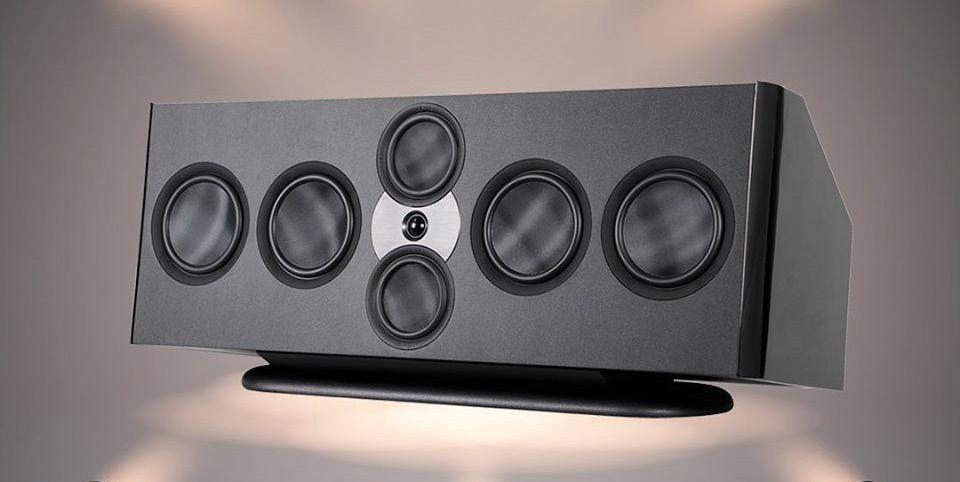

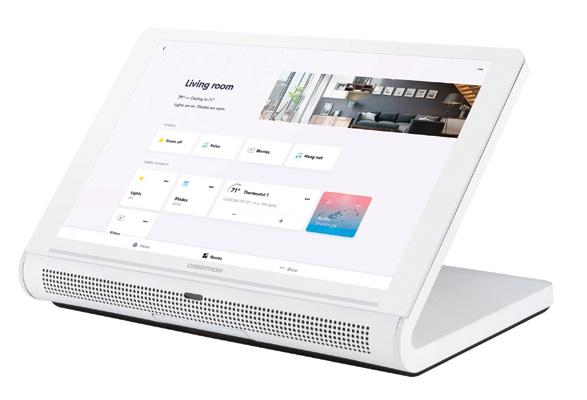
Leon dealers and designers can now upgrade to one of eight colors in its new Designer Grille Fabric Collection. These acoustically transparent fabrics are Rich Black, Gunmetal, Charcoal, Granite, Pearl, Ivory, Platinum, and White. A contemporary TV frame that encases any display and soundbar, Leon’s Edge Media Frame is now available in three new metal veneer finishes: Brushed Smoked Aluminum, Champagne, and Crescendo Cider, in addition to the seven wood finishes that are also available.


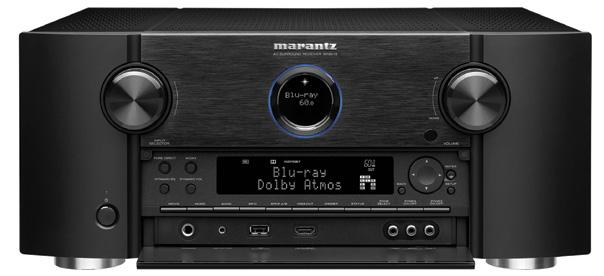
The latest additions to the Marantz SR-Series AV receiver line – the SR5015, SR6015, SR7015, and SR8015 – are 8K-ready and have been designed to deliver musical sound from any source, including home theater, vinyl, and streaming media. They feature highcurrent discrete power amplifiers and the company’s proprietary Hyper Dynamic Amplification Module (HDAM) circuitry. The flagship SR8015 supports DTS:X Pro, which will allow users to enjoy up to 13 channels of DTS:X decoding with speaker configurations such as 7.2.6 or 9.2.4. Listeners can also enjoy the latest in IMAX Enhanced films in 7.2.6 or 9.2.4 speaker configurations.
Metra Home Theater Group has added a new HDMI 2.0 audio extractor to its AV product line, the CS-HAUDEXT by Helios. It provides full support for 1080p, 3D, 4K/30, 4K/60, and HDR. The new product features one HDMI input that converts audio to one HDMI, one optical, one digital coax, and one L/R stereo audio output. It supports ARC and the TV audio will return an output through the optical port. There are three audio mode options: 2.0, 5.1, and ADV.


SnapAV has introduced the Control4 Chime Video Doorbell – the first video doorbell solution designed to enable automation and a higher level of integration with Control4 homes and businesses. Available in black and satin-nickel, Chime features HD video with a 5-megapixel camera, a 180-degree field view, and a built-in night mode for clear visibility at all hours of the day. It also enables natural two-way communications, allowing users to hear and speak at the same time.

The new compact, more affordable, sonnenCore provides customers with straightforward access to reliable emergency backup power, intelligent energy management, and round-the-clock access to stored solar with an easy-to-install, competitively priced system. It is equipped with 4.8kW/10kWh of maximum usable capacity and pairs with new and existing PV systems, with an MSRP of $9,500. The system uses long-lasting, cobalt-free, recyclable, and safe lithium iron phosphate batteries, that are designed for stationary energy storage.

Sonos Arc, Beam, Playbar, Playbase, or Amp owners now can pair a second Sonos Sub to their home theater setup. According to Sonos, the ability to add two Subs has been a frequently requested feature by customers and professional installation partners. The dual Sonos Sub update is only available as an option in the S2 app, and at least one of the Subs in the setup must be a Sub (Gen 3) due to its added processing power.
Two new Vanco Evolution HDMI fiber extenders support multiple methods of control and extend 4K HDR resolutions to extreme distances. The EVEXFBR1 with bi-directional IR and RS-232 and the EVEXFBK1, which adds KVM over USB 2.0 passthrough, are designed to extend 4K HDR video and audio signals at distances up to 984ft/300m over multimode fiber optic cables and 6.2 miles/10km over single-mode fiber optic cables, making them suited for extending AV via HDMI at any size or scale.

WiSA is set to launch its WiSA SoundSend audio transmitter, the wireless audio association’s first branded product to hit the market since its inception. The SoundSend is an HDMI (or optical)-connected transmitter designed to make wireless multichannel audio accessible in minutes to nearly every smart TV. The SoundSend transmitter, which works with smart TVs with ARC/eARC capabilities, connects to WiSA Certified speakers from brands like Klipsch, Savant, Dynaudio, and Enclave Audio.

The new Clarus CODA USB-DAC includes a headphone amplifier and an MQA renderer, for connecting to the global streaming service, TIDAL and Xiami Music in China, which provides a guaranteed delivery of original sound recordings. The CODA features the latest in USB-DAC technology that provides ultra-low distortion, more detail, greater dynamics, and a bigger sound stage. Designed to be used with a smartphone, tablet, or computer, the CODA has a 2-button volume control and a choice of three rolloff filters.
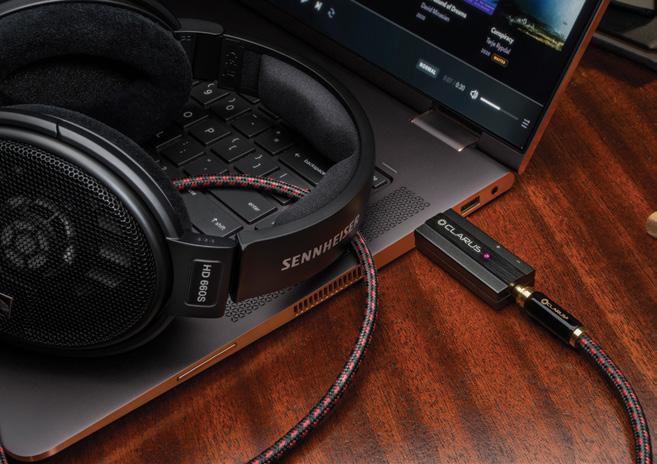
What We Learned From 2020
By Anthony Elio 2020 is over. And before you get misty-eyed while reflecting on all the amazing things that happened this year, it’s also important to know what we learned in the first 365 days of the ‘20s. So cuddle up with some of that triple-ply toilet paper you hoarded and pour yourself a cool glass of hand sanitizer, it’s time we head down memory lane.
Photo: iStockphoto.com/South_agency

Photo: iStockphoto.com/Rowan Jordan
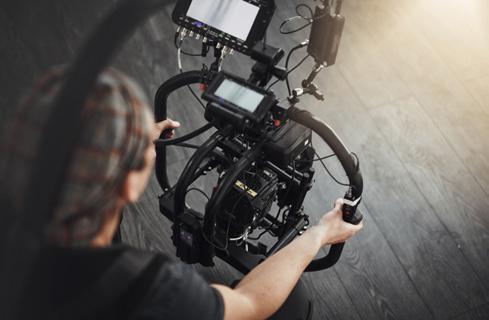
The Film Industry is in Flux.
Like many other businesses, the film industry saw tremendous changes this year. Big hits were released on-demand. Production schedules were delayed. And due to so few films released in theaters, Sonic the Hedgehog is the Best Picture frontrunner by default, despite criticisms of its video game origins and neoconservative message.
Additionally, 2020 is the first year since 2009 where Marvel Studios hasn’t released a film in theaters. This will definitely leave them in the red for the year, especially after a 2019 with three separate billion dollar-earning films.
If, like me, you’re concerned about the future of the iconic studio, please consider donating to https://www.gofundme. com/save-marvel-studios.
Remote Work is the Future.
For all the pressure we used to put on in-person meetings, birthday parties, and massive layoffs, 2020 has shown us that a simple Zoom call can replace most professional interactions.
In fact, ever since the office instituted remote workplace interventions, I’ve been saving countless hours every day.
The CDC is Keeping Up With the Times.
The Center for Disease Control (CDC) has scrambled all year to keep up with modern health issues. However, one of the most monumental moments of the year was the CDC reversing its negative stance on handwashing, which they used to claim heightened your risk of hand pruning.


Photo: iStockphoto.com/sshepard
Bloodletting Does Not Cure COVID-19.
Trust me.
Photo: iStockphoto.com/TonyBaggett

There is Hope on the Horizon.
While this year has been troublesome for some of us, there’s still reason for us all to believe that better tidings await in 2021. For the first time in eight years, the McRib is available across the U.S. My carbon monoxide detector has finally stopped beeping. And nationwide, we’ve gotten past our political differences and united as one.
Photo: iStockphoto.com/DieterMeyrl
Anthony Elio is a writer and Cutco sales rep located in Denver, CO. He currently plays drums in the band Television Generation, which has as many as 20 Spotify streams at the time of this writing. His other interests include competitive paddle ball and making pornographic artwork on his Etch A Sketch. Elio’s further editorial work can be found on PigeonSushi.com.










